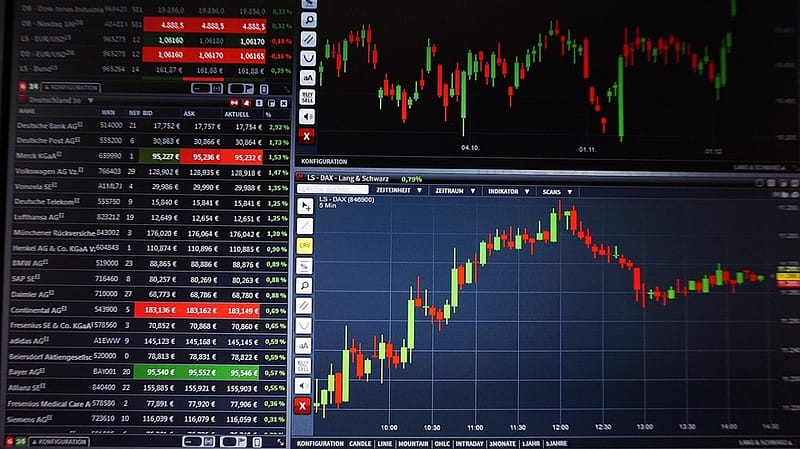Carry trade is a popular forex trading strategy that involves borrowing in a low-interest-rate currency and investing in a high-interest-rate currency to profit from the interest rate differential. This strategy capitalizes on the differences between countries’ interest rates and can provide traders with a steady stream of income, in addition to potential capital gains. In this article, we will delve deeper into the basics of carry trade strategies, discuss how to profit from interest rate differentials in the forex market, and examine the factors that can impact the success of a carry trade.
Understanding the Carry Trade
The carry trade strategy involves taking a long position in a high-interest-rate currency and a short position in a low-interest-rate currency. The aim is to capture the interest rate differential between the two currencies, which is earned as a daily rollover payment or “swap” from your forex broker. The larger the interest rate differential, the more potential profit you can earn from the carry trade.
Interest rate differentials are a primary driver of currency movements, and central banks’ monetary policies play a significant role in shaping these differentials. By keeping an eye on central banks’ actions and economic indicators, traders can anticipate changes in interest rates and adjust their carry trade positions accordingly.
Advantages of Carry Trade Strategies
1. Steady Income: Carry trades can generate a consistent income stream through swap payments, regardless of market fluctuations.
2. Diversification: Incorporating carry trades into a forex portfolio can help diversify trading strategies and mitigate risks associated with other trading styles.
3. Capital Gains Potential: In addition to the interest rate differential, carry trades can also generate capital gains if the high-interest-rate currency appreciates against the low-interest-rate currency.
4. Trend Following: Carry trades often follow the direction of long-term trends in the forex market, allowing traders to capitalize on trending currency pairs.
Key Considerations for Carry Trade Strategies
1 Risk Management: Carry trades are subject to market risks, such as changes in interest rates, geopolitical events, and economic downturns. It’s essential to have a solid risk management plan in place, including setting stop losses and position sizing appropriately.
2 Currency Selection: Choosing the right currency pairs is crucial for carry trade success. Look for pairs with stable interest rate differentials and low volatility to minimize risk.
3 Monitoring Economic Indicators: Keep an eye on economic indicators and central banks’ policy decisions to anticipate changes in interest rates and adjust your carry trade positions accordingly.
4. Trading Costs: Pay attention to the spreads and swap rates offered by your forex broker, as these costs can impact the profitability of carry trade strategies.
5. Market Sentiment: Carry trades can be sensitive to shifts in market sentiment. During periods of risk aversion, high-interest-rate currencies may depreciate against low-interest-rate currencies, leading to potential losses.
6. Timing: Successful carry trading requires a long-term perspective, as interest rate differentials may take time to translate into profits.
Implementing Carry Trade Strategies
1. Research and Analysis: Begin by conducting thorough research on various currency pairs and their respective interest rates. Analyze economic indicators, central bank policies, and geopolitical events to identify potential carry trade opportunities.
2. Choose Your Currency Pair: Select a high-interest-rate currency and a low-interest-rate currency, taking into consideration the stability of the interest rate differential and the currencies’ overall volatility.
3. Calculate the Interest Rate Differential: Determine the difference between the two currencies’ interest rates to estimate your potential swap payment.
4. Enter Your Positions: Open a long position in the high-interest-rate currency and a short position in the low-interest-rate currency.
5. Manage Risk: Establish a risk management plan, including setting stop losses, position sizing, and monitoring economic indicators.
6. Monitor and Adjust: Keep track of your carry trade positions, paying close attention to changes in interest rates, market sentiment, and economic events. Adjust your positions as needed to maximize profits and minimize risk.
7. Stay Informed: Continuously educate yourself on global economic developments and central banks’ policy decisions. Staying informed will enable you to make more informed decisions and better manage your carry trade positions.
8. Leverage: While leverage can amplify your profits, it can also magnify your losses. Use leverage wisely and in accordance with your risk tolerance and trading strategy.
10. Exiting Carry Trades: Develop a clear exit strategy for your carry trade positions. Consider using trailing stop losses to lock in profits and protect your capital, or exit when economic indicators suggest a significant change in interest rates or market sentiment.
Conclusion
Carry trade strategies offer forex traders an opportunity to profit from interest rate differentials while providing a steady income stream and diversification benefits. By understanding the fundamentals of carry trades, implementing effective risk management techniques, and staying informed about global economic developments, traders can take advantage of this popular forex trading strategy. Remember, patience and a long-term perspective are key to successful carry trading, as interest rate differentials may take time to translate into substantial profits.







